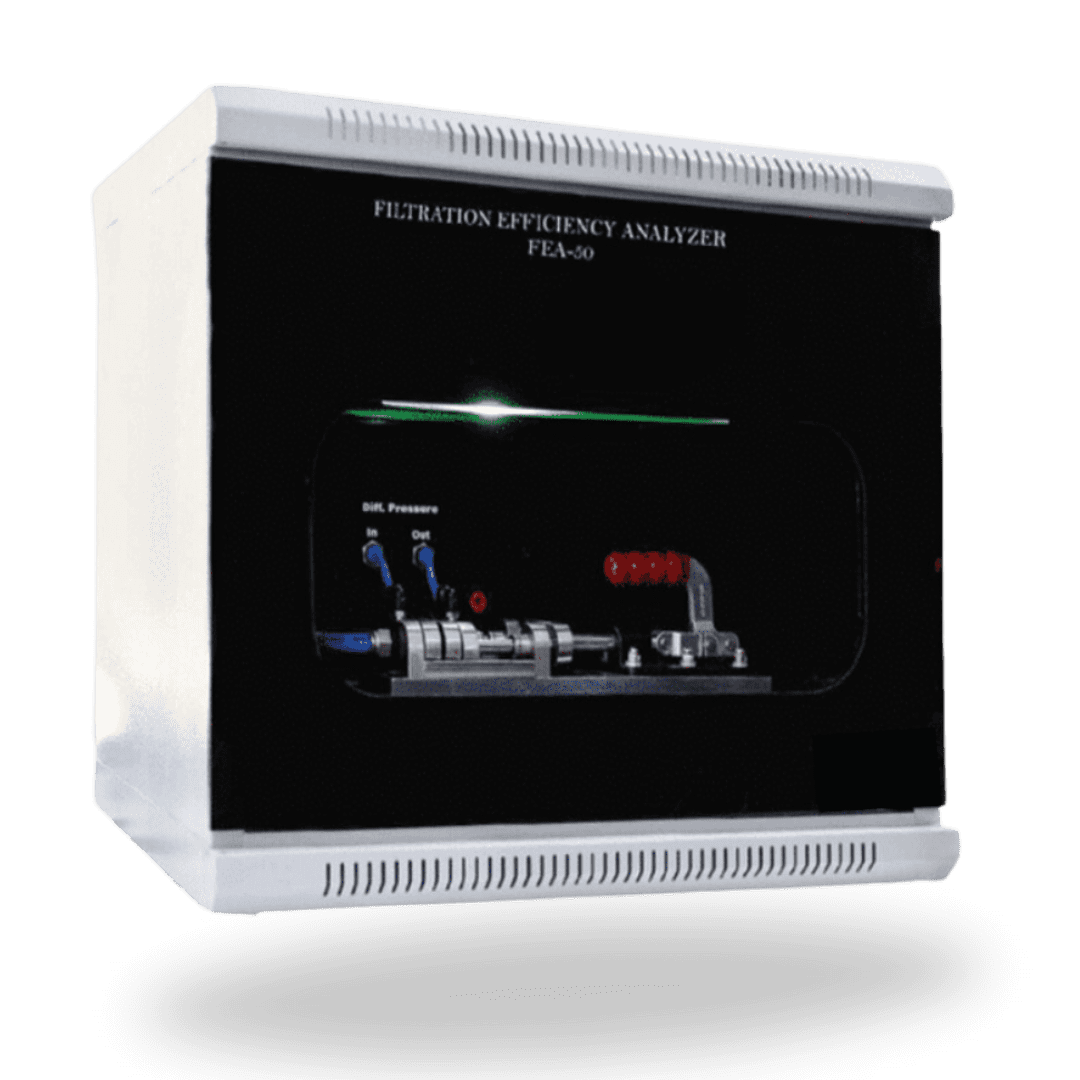PARTICULATE FILTRATION
EFFICIENCY ANALYZER
EFFICIENCY ANALYZER

CUSTOM MADE FOR TECHNICAL TEXTILE INDUSTRY
Standard: ASTM F2100, ASTM F2299, ISO 29463,
ISO 14644, ISO 16890
ISO 14644, ISO 16890
Test Range: 0.3-10 microns at Flow Rate 1 to 100 liters/minutes
Test Duration: 5-10 minutes
Precision: 0.01%F.S.


TECHNOLOGY

Particulate Filtration Efficiency is achieved through an automated Aerosol control system that applies either mono or poly-dispersed particles to one side of the fabric, and the particle counts in the upstream and downstream, along with differential pressure are detected. The final Filtration Efficiency is obtained by calculating percentage leak in terms of the ratio of upstream to downstream concentration of aerosol particles. The PFE-50 device provides detailed insights of a textile material which can retain the particulate matter.
APPLICATIONS

- Woven/Non-Wovens
- Fabric Filters
- Medical Face Masks
- Spunbond/Meltblown media
- Personal Protective Equipment (PPE)
- Cleanroom Garments
CUTTING EDGE DESIGN

SIMPLE | INTELLIGENT | MORE INTEGRATED
The hardware system has evolved into a highly sophisticated instrument with increased ease-of-operation, data accuracy, reliability, and end-to-end automated operation.
ADVANCED SOFTWARE

AI BASED | DYNAMIC REPORTS | EASY TO USED
Unprecedented visualization and collaboration using new M19 software control program and test report program. Experience the power of A.I based cognitive software control program that virtually eliminated user bias throughout the data acquisition process and data interpretation, redefining the way data is generated and consumed by your team.
HIGH PERFORMANCE COMPUTING

INCREASED PRECISION | ACCURACY | REPRODUCIBILITY
M19 instruments deploy cutting-edge ARM7 group of 32-bit RISC ARM processor cores licensed by ARM Holdings for microcontroller use, which not only enhances the precision of our analyzers but also ensures consistent, reliable results across all testing platforms. With our technology-centric approach, we strive to set a new standard for material characterization, promoting credibility and trust in every test conducted.
FAQ's
1 - WHAT IS THE PARTICULATE FILTRATION EFFICIENCY ANALYZER USED FOR?−
- The Particulate Filtration Efficiency Analyzer is a device used to measure the effectiveness of textile based filters in capturing and retaining aerosol particles of a specific micron size.
2 - HOW DOES THE PARTICULATE FILTRATION EFFICIENCY ANALYZER WORK?+
3 - DOES YOUR COMPANY PROVIDE A CUSTOMIZED SETUP OF PARTICULATE FILTRATION EFFICIENCY ANALYZER FOR DIFFERENT MATERIALS?+
4 - WHAT ARE THE BASIC REQUIREMENTS FOR THE USAGE OF PARTICULATE FILTRATION EFFICIENCY ANALYZER?+
5 - WHO USES PARTICULATE FILTRATION EFFICIENCY ANALYZER?+
6 - HOW WILL PARTICULATE FILTRATION EFFICIENCY ANALYZER BENEFIT MY COMPANY?+


